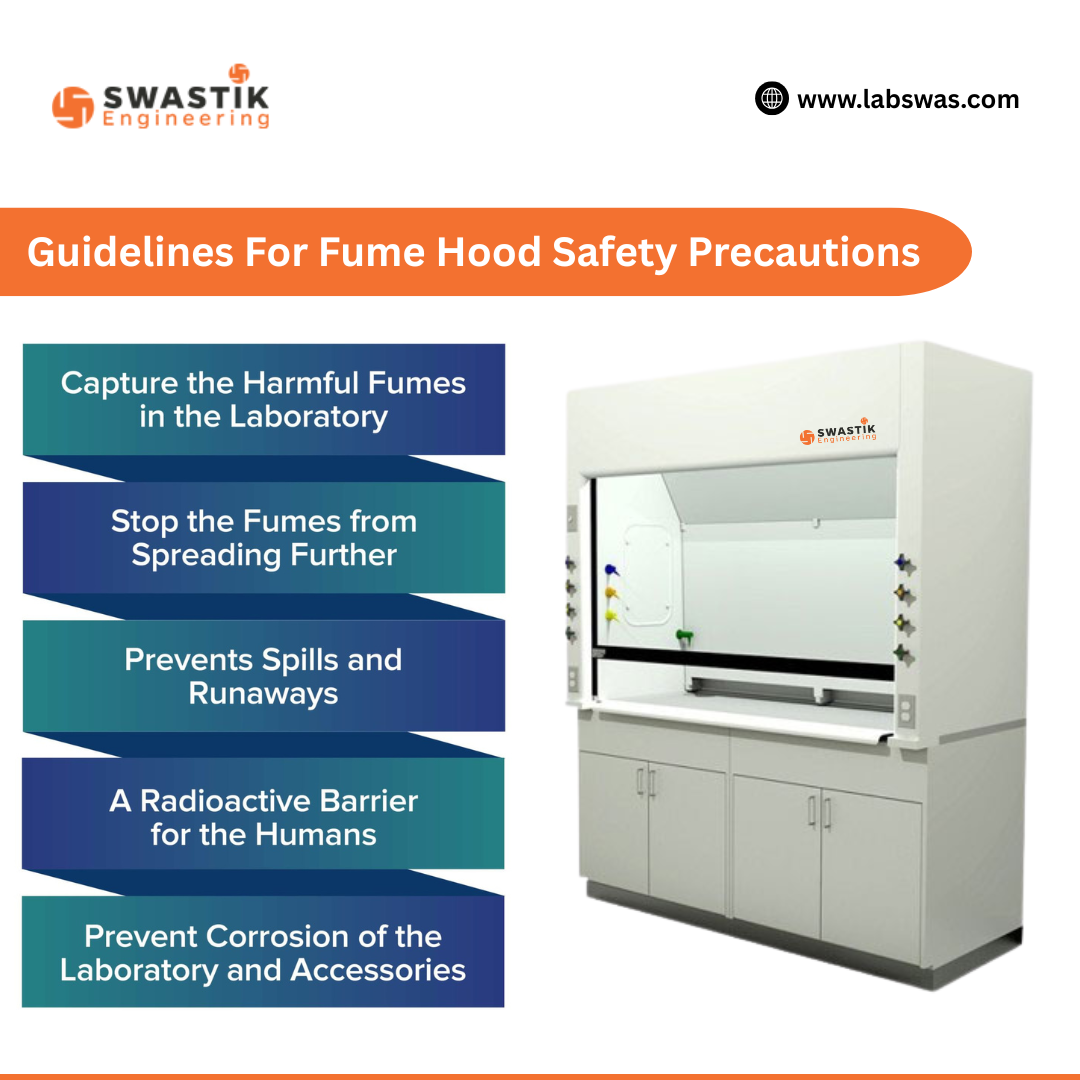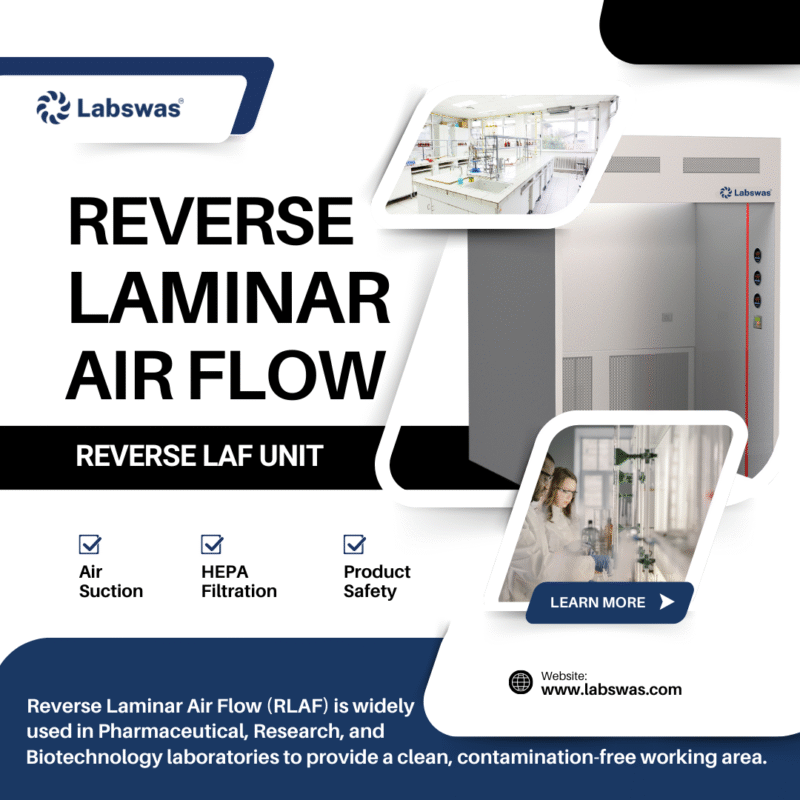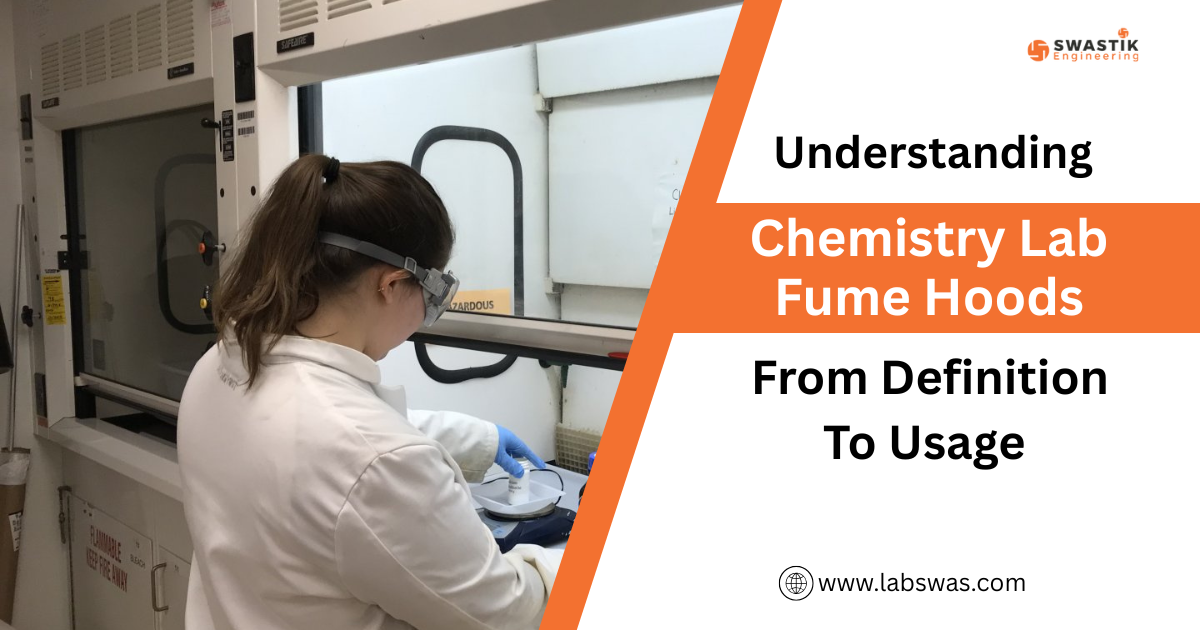What Is a Fume Hood?
A fume hood is one of the important clean room equipment. It is a big and closed system that protects users from harmful chemicals as well as fuels. It has a sliding front window called a sash. Note that the hood pulls air from the lab and vents it outside. This process prevents dangerous substances from reaching the breathing zone. A fan or blower creates airflow inside the hood. Air enters through the front opening and moves across the workspace before being expelled. Needless to mention, the airflow ensures that fuels and particles do not escape into the lab.
Types of Fume Hoods
There are two main types of fume hoods.
Ducted Fume Hood
These types of fume hoods connect to the building’s ventilation system. Then, they continuously expel contaminated air outside. Undoubtedly, they provide excellent protection but require permanent installation.
Ductless Fume Hood
These hoods use filters to trap hazardous particles. Moreover, they push clean air back into the lab. Clearly, they offer flexibility and portability but require regular filter replacement.
Some other types of fume hoods are
- Benchtop Fume Hood
- Auxiliary Fume Hood
- Perchloric Acid Fume Hood
- Walk-In Fume Hood
- Filtered Fume Hood
- Polypropylene Fume Hood
Application-Based Fume Hoods
- Industrial Fume Hood
- Kitchen Fume Hood
- Laboratory Fume Hood
Fume Hood Safety Rules
Check Safety Measures Before Using a Fume Hood
You must follow the steps below.
● You should adjust the sash to the correct height. It will not provide enough protection if it is too high. Look for the marked height on the frame.
● Check the airflow gauge. Ensure it shows that air is moving within the correct range.
● Verify that the exhaust fan is running. This fan is essential for removing dangerous fumes. Also, inspect the baffles (adjustable panels at the back) to confirm that airflow remains steady.
● Remove potential spark sources. Keep electrical outlets, static electricity sources, and open flames away from the hood to avoid ignition.
● Inspect air filters. Dirty or clogged filters reduce efficiency. Always use clean filters to trap harmful fumes.
Follow Safety Rules While Working
You must follow these tips when working with a fume hood.
● Wear eye protection. Even with the sash down, safety goggles are necessary.
● Minimize movement near the hood. Avoid sudden or excessive motion to prevent airflow disturbances.
● Keep air passages clear. Regularly check that nothing is blocking airflow during use.
● Position materials correctly. Keep all items at least six inches inside the hood to maintain proper ventilation.
Never Store Chemicals in a Fume Hood
Remove all chemicals once you finish using the fume hood. You should not store them inside the hood. It will increase the risk of spills, leaks, and contamination.
● Store chemicals in approved cabinets. Use industrial-grade storage designed for hazardous substances.
● Place large equipment on raised blocks. This allows air to flow underneath and prevents airflow disruption.
Updated Training For Employees
A firm must provide regular training because it is essential for safe fume hood operation.
● Train all new employees. Ensure they understand the correct procedures before using a fume hood.
● Provide refresher courses. Ongoing training helps prevent mistakes and keeps safety knowledge fresh.
● Update employees on changes. You must inform the team immediately if new chemicals, equipment, or safety protocols are introduced.
Fume Hood Safety Precautions
You must check these precautions to be safe while working in a lab:
● You must always keep the sash at the marked level as it will protect you from harmful fumes.
● Users should place their equipment and chemicals at least 6 inches inside. This will allow proper ventilation.
● One must keep only what is most needed inside the hood because too many items can block airflow.
● Check airflow before use – Look for the airflow indicator or test with a tissue to make sure air is moving correctly.
● Close the sash when not in use – Lower it when you step away to keep fumes contained.
● Keep electrical cords and heat sources away – Sparks or heat can ignite flammable vapors.
● You must make sure that you never leave chemical waste in the hood.
● You should check for damage like cracks, leaks, or airflow issues. Plus, you must report these issues to lab staff immediately.
● It is important to place chemicals in the middle of the hood to ensure even airflow around them.
● One must keep the back and side vents clear for proper air circulation.
● You must turn on the hood before use and make sure it’s running before you start working.
Conclusion
A laboratory fume hood has a critical role in maintaining a clean environment by controlling harmful gases, air, vapor and substances. It is always recommended to verify airflow and other functions by proper fume hood inspection. By collaborating with the reputed fume hood manufacturers and maintaining proper safety, researchers can minimize the various risk. They can conduct research more effectively and efficiently.







